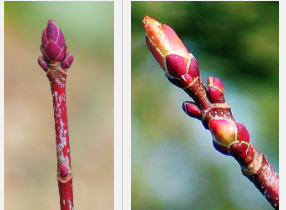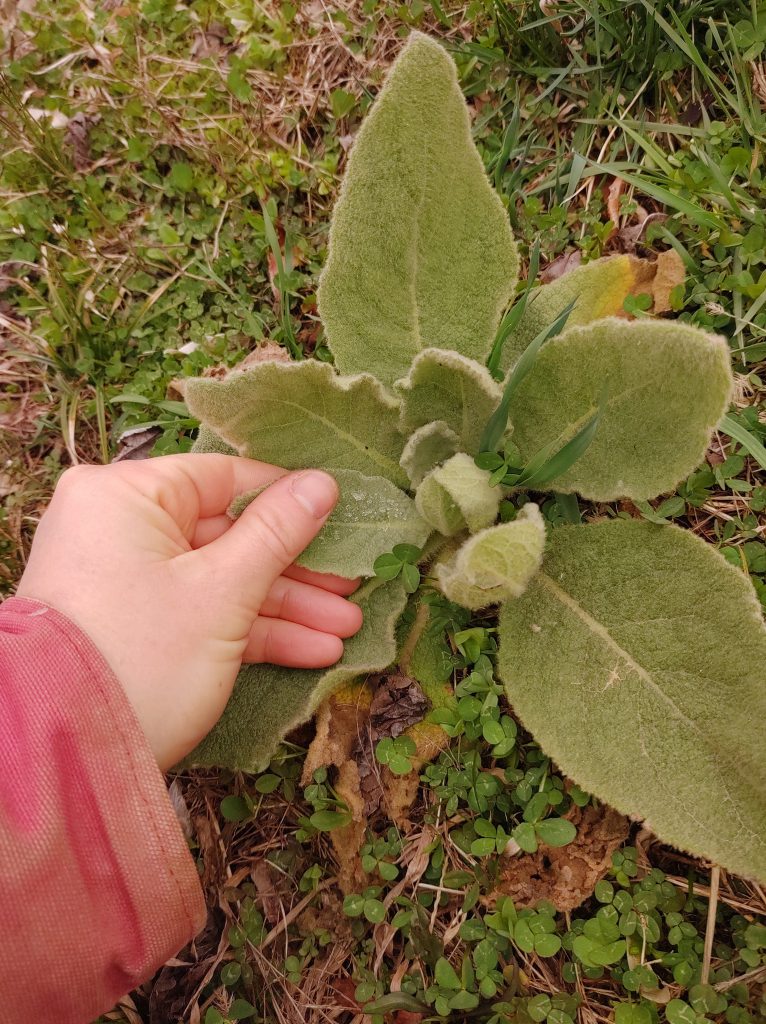The change from winter to spring is one of our favorite times of year! As nature lovers, we have missed seeing the plants and the critters moving around.
Tiny details can be a clue that spring is coming — even if it’s still cold!

Activity: Finding signs of spring
You will need:
- Paper/pencil or a camera
- A yard or outdoor area
What to do:
Go on a hunt for the following things! When you find something, draw it, write it down, or take a picture (whatever works for you).
Sight

Find…
- Three different shades of green
- As many different flowers in bloom as you can
- A bud that isn’t open yet
- Something that has camouflaged itself (made itself the same color as things around it, so that it’s hard to see)
Sound
- How many things can you hear while sitting in nature?

Touch
- Something smooth
- Something fuzzy
Smell
- Some leaves have different smells when you crush them, like onion grass. Can you find an interesting smell?
Anything else?
- What unique things can YOU find?
Don’t taste anything, because some things are not safe to eat. We will talk how to safely eat wild plants in another lesson.
Summary
- Look for the items above
- Draw, write, or take photos of what you find
- Post some of your pictures in the comment section below to share! *
(*if you prefer not to use the comment section, email your photos to darcy@ruralaction.org, and we can share them in a later post).
22 replies on “Signs of Spring!”
What are some “signs of spring” you see?
Here’s a sign of spring. A cherry tree blossoming.
Bluebells everywhere!
This plant is young and fragile. We found it in a watery place. Its called horsetail. This is its flower!
Thank you for sharing, Juni! What a cool find. I love horsetail because it is an ancient plant known as a “living fossil,” and makes spores like a mushroom. I’ve never seen one that is quite those colors before!
These ants are camouflage because that blend in with their habitat! This ant hill has been here for at least 12 years! It is very big and is still growing!
oooh, this is interesting to me, because while I was looking for a spot to make this video, I found what I think is the biggest ant hill I’ve ever seen in Ohio! It seemed like it might be the size of a soccer ball. I will have to take a picture of it to share.
I also didn’t know that ant hills lasted in the same place for a long time. Thanks for teaching me something.
Juni and Darcy,
There is an ant hill on my property that has been here since I was a kid (probably at least 20+ years)!! No joke…I will send a picture. For now, here is a picture of an unfurling Poplar bud.
Love this blog and am excited to participate with Annabelle (4). Getting outside in nature has really been our source of grounding and sanity during this crisis.
Thanks Darcy 🙂
That is so cool! I am so happy that you are joining in, Carrie! Hopefully the activities will work for little Annabelle.
Here are some wild Turkey we drove past just the other day.
Thanks for sharing, Archie and Brodie! I wonder what they were doing there.
Did anyone find something that they didn’t recognize?
Darcy, do you know what this is coming up?
Oooh, this is mayapple! When it opens up, I think it looks like a fairy umbrella. Hidden under its leaves, it will make a little yellow fruit that box turtles love to snack on.
Here is what it looks like: http://www.missouribotanicalgarden.org/PlantFinder/FullImageDisplay.aspx?documentid=9422
And here is one I saw that got trapped in a leaf before it opened: https://www.inaturalist.org/observations/22620584
We found ferns coming out, definitely a sign of spring!
We also found our first morel mushroom of the season!
Looks delicious! I will have to get out and look for some myself. Are you going to eat it?
We are officially calling ourselves the South Jersey Chapter of the Young Naturalists Club 🙂 Max Lattimore White is 10, Cedar Lattimore White is 3, and Isabel Miller is 11. Here are the signs of Spring we’ve seen in Cape May Court House this week!
The Southeast Ohio Young Naturalists are honored to have South Jersey Chapter! Thank you for sharing your awesome finds.
This must be the first time that Isabel’s hair has served as camouflage.
It is tricky to identify a bird egg just by the shell, if you haven’t also seen the nest or the bird! It looks like it was from a bird at least as big as a robin, though (maybe even a mourning dove). Have you seen any birds regularly near where you found the egg?
Here is a baby bird egg– we can’t tell what kind, we know not a robin because it is just a plain white shell.
Here we found a tree with flowers the same color as Isabel’s hair!